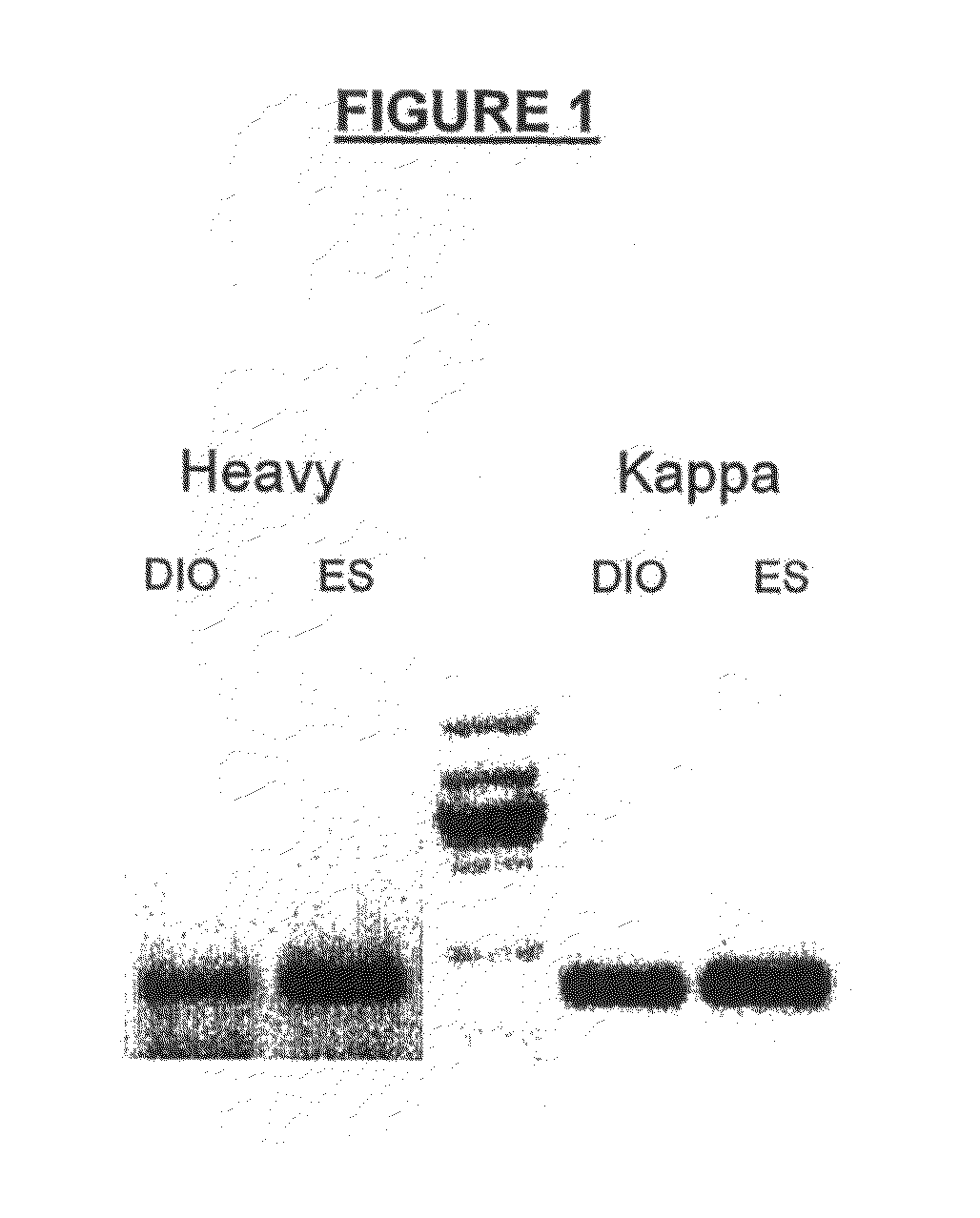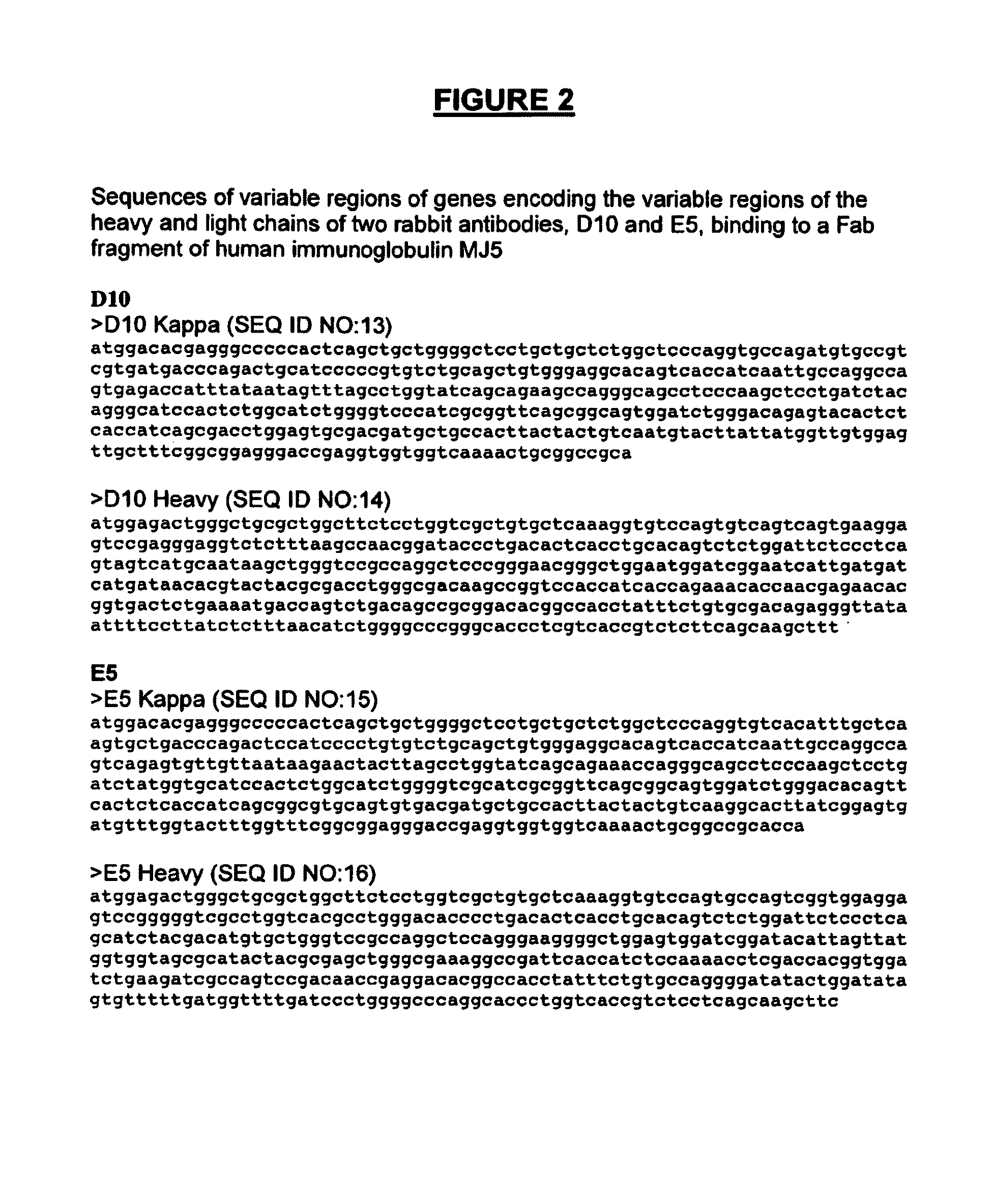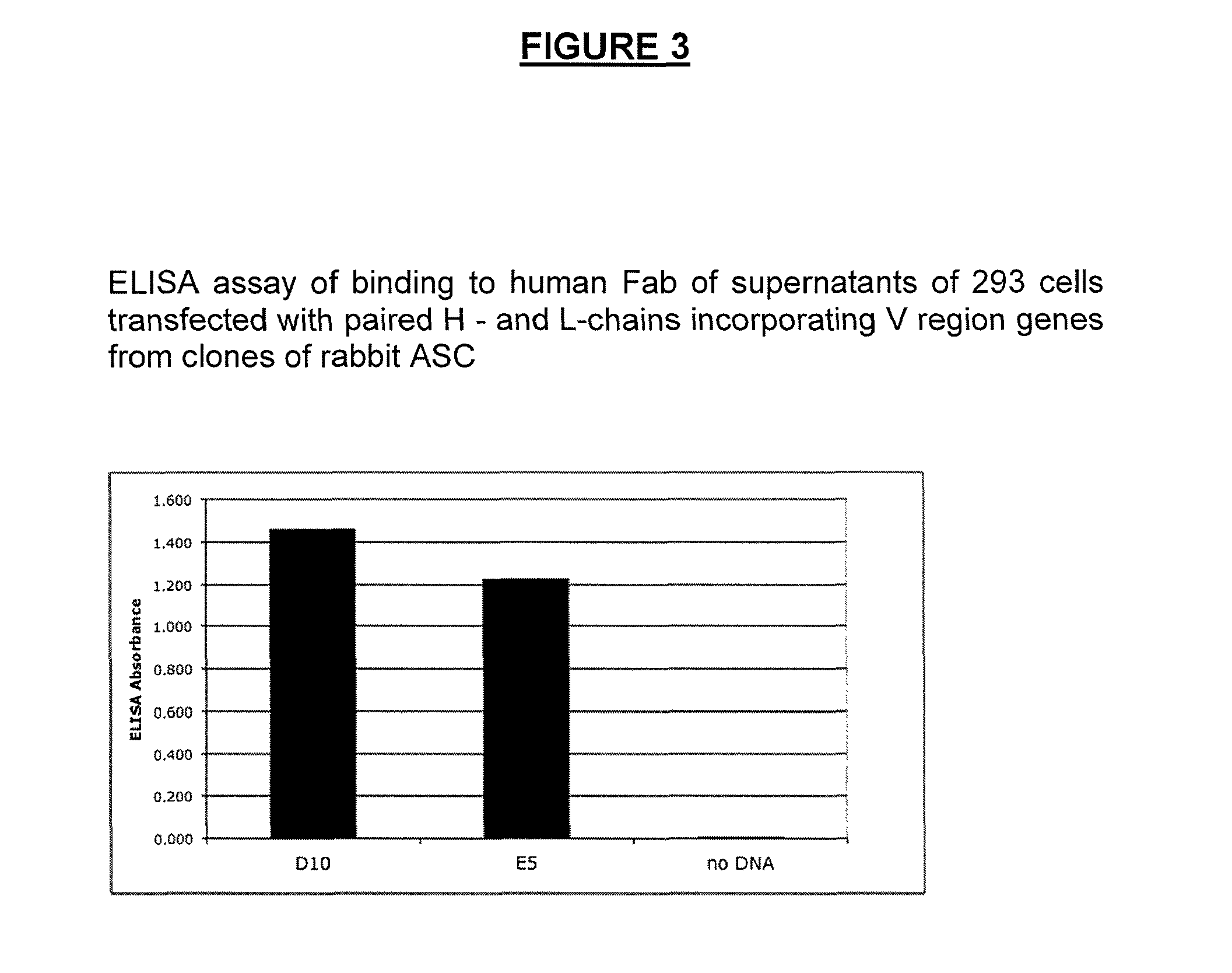Methods of isolating cells and generating monoclonal antibodies
a monoclonal antibody and cell technology, applied in the field of isolating cells, can solve the problems of difficult efficient isolation of cells, and achieve the effect of increasing the concentration of antibody-secreting cells in the sampl
- Summary
- Abstract
- Description
- Claims
- Application Information
AI Technical Summary
Benefits of technology
Problems solved by technology
Method used
Image
Examples
examples
1. Isolation of Rabbit ABC from a Recently Immunized Rabbit and Expansion to Clones of Antibody-Secreting Cells
[0185]Blood (20 ml) from a rabbit immunized with a fusion protein of GST and the human protein M-Ras and last boosted 6 days previously was collected into heparin and PBMC prepared. The antigen was biotinylated using standard methods specified by the manufacturer. Aiming for an average of 2 biotin molecules per antigen molecule. PIERCE product ‘EZ-link Sulfo-NHS-SS-Biotin’ (Cat #21331) was allowed to come to room temperature before the reagent is opened (stored at −80° C. between uses). A 20 mg / mL dilution was prepared in dH2O. Using calculations based on the molecular weights of the targeted antigen and the biotinylation reagent (606.7 g / mol), an 8 to 20-fold molar excess of biotin was used in the reaction. The two components were combined in PBS, and left to stand at RT for 30 min. The mixture was added to dialysis tubing, and the excess free biotin is removed by dialysis...
PUM
| Property | Measurement | Unit |
|---|---|---|
| optical density | aaaaa | aaaaa |
| time | aaaaa | aaaaa |
| time | aaaaa | aaaaa |
Abstract
Description
Claims
Application Information
 Login to View More
Login to View More - R&D
- Intellectual Property
- Life Sciences
- Materials
- Tech Scout
- Unparalleled Data Quality
- Higher Quality Content
- 60% Fewer Hallucinations
Browse by: Latest US Patents, China's latest patents, Technical Efficacy Thesaurus, Application Domain, Technology Topic, Popular Technical Reports.
© 2025 PatSnap. All rights reserved.Legal|Privacy policy|Modern Slavery Act Transparency Statement|Sitemap|About US| Contact US: help@patsnap.com



